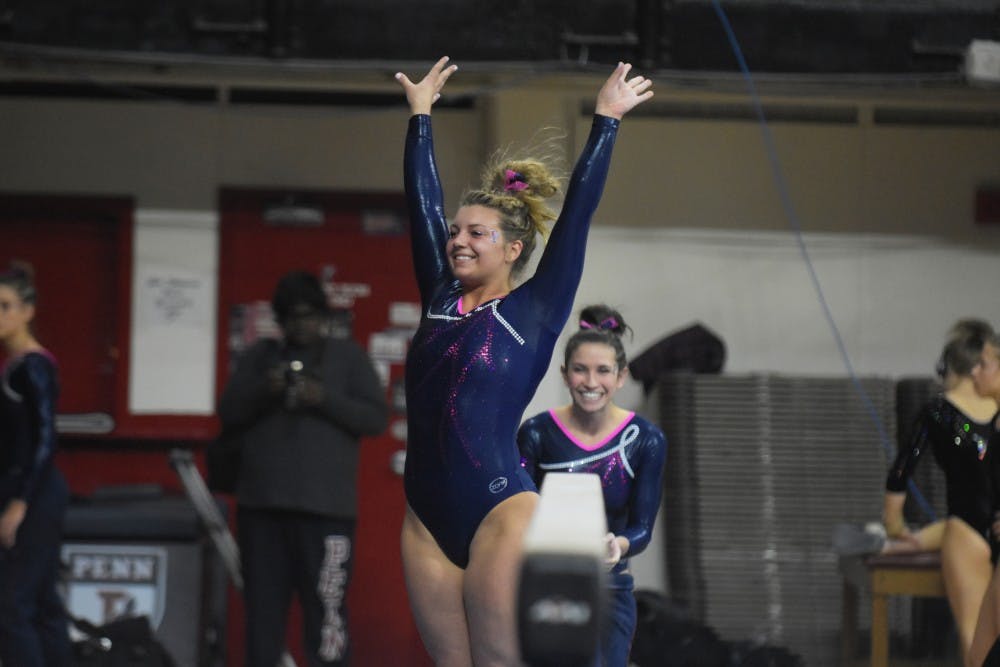Six up.
That’s how many gymnasts a team can present to go up on each apparatus during a meet. The order of those six gymnasts is as much of a challenge as their actual performances themselves, crucial to the success of the meet.
This Sunday, Penn gymnastics will travel to College Park, Maryland to compete in its third consecutive quad meet of the season. The Quakers will face off against Maryland, Kentucky, and William and Mary. With only a week separating the Red and Blue from the Ivy Classic, this weekend’s tournament will be crucial for Penn to assure confidence in the lineup before the ultra-important conference meet.
“You normally put the more difficult routines at the end of the lineup,” junior Ally Podsednik said. “We like to build a ladder; whoever goes first is supposed to hit, and everyone else is supposed to build [their scores] off of it.”
It sounds simple enough; the goal is to build. Ideally, with six gymnasts going up and five of their scores counting, if everything is executed correctly, Penn will drop the score of its leadoff gymnast, which would hopefully be their lowest. However, that doesn’t always tend to be the case.
In their previous two quad meets combined, the Quakers have dropped the score of only one of their first two gymnasts in the eight rotations that they competed in. Conversely, in its monumental win over Yale, Penn dropped the score of one of its leadoff gymnasts twice out of four possible rotations.
In recent weeks, the question has been: how do the anchors respond when the ladder ahead doesn’t build the way it’s supposed to? To Podsednik, who usually anchors on vault, the focus is always on her routine anyway.
“It’s the same thing no matter what,” the Houston native said. “Personally, I don’t really watch who goes in front of me, so I don’t know who’s fallen or who’s made great vaults. My job is to hit, so I go up and hopefully do my job.”
For junior Alex Hartke, the staple anchor on floor for Penn, the focus isn’t on the pressure of her performance, but excitement of watching her teammates.
“It feels like there is less pressure on me [to anchor] just because of the nature of floor,” Hartke said. “Having a lineup that the whole team is confident in and has so much fun watching makes me feel that there isn’t as much pressure maybe it seems.”
The task never really changes: hit your routine. But for an anchor, the routines that occur before her set contextualize how important it is that she complete her task. For some, it takes an enhanced attention to their own routine. For others, they have don’t think about the routine until their name is called. Either way, being near the end of the ladder means finding a way to hit, no matter what.
The ladder can work in more ways than one. In an individual rotation, Penn will put its routines in order of ascending difficulty, looking to peak with the score of their anchor gymnast. Similarly, the Red and Blue are always looking to add difficulty to their routines and clean up their execution to peak for the bigger meets. With the Ivy Classic fast approaching, the time has come for the Quakers to hit one of the upper rungs of the ladder. This weekend is their last chance to climb up another rung, and it’ll take a total team effort to get Penn back on track.
After all, though six go up, only five count.









